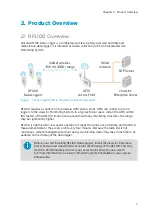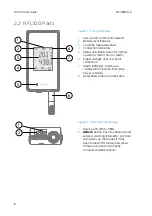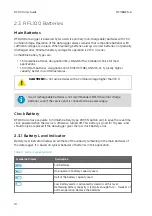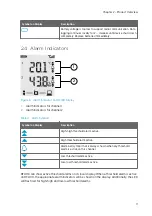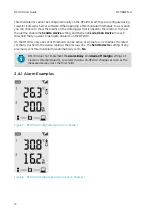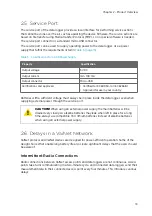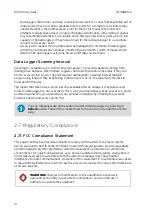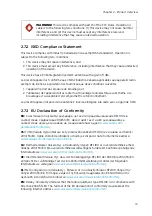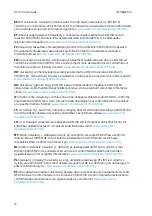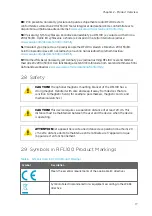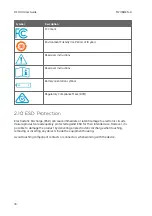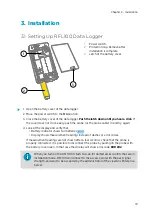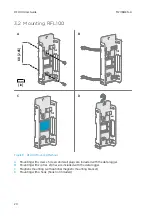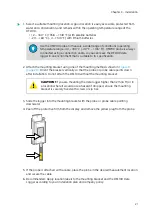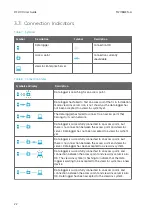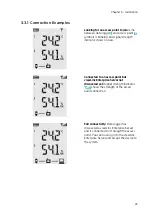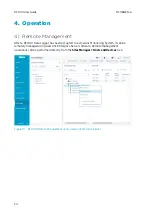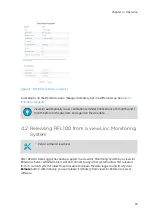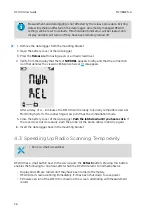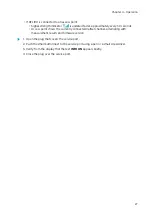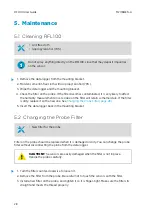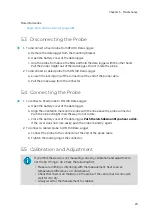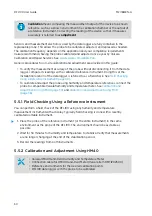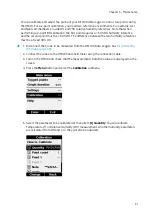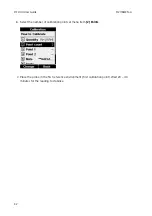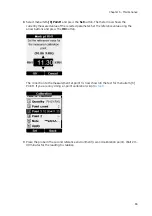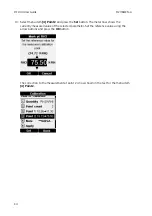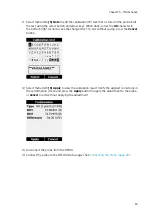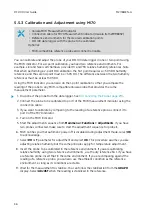
1. Select a suitable mounting location. A good location is easily accessible, protected from
water and condensation, and remains within the operating temperature range of the
RFL100:
• +2 ... +60 °C (+35.6 ... +140 °F) with alkaline batteries
• -20 ... +60 °C (-4 ... +140 °F) with lithium batteries
Use the HMP110 probe to measure a wider range of conditions (operating
temperature range -40 ... +80 °C (-40 °F ... +176 °F)). HMP110 probe is always
connected using a connection cable, so you can leave the RFL100 data
logger in an environment that is suitable to its specification.
2. Attach the mounting bracket using one of the mounting methods shown in
. Orient the bracket vertically so that the probe or probe cable points down
after installation. Do not attach the RFL100 without the mounting bracket.
If you are mounting the data logger higher than 2 m (6 ft) or in
a location where it would pose a hazard if dropped, ensure the mounting
bracket is securely fixed with screws or zip ties.
CAUTION!
3. Slide the logger into the mounting bracket with the probe or probe cable pointing
downward.
4. Peel off the protective film from the display and remove the yellow plug from the probe.
5. If the probe is attached with a cable, place the probe in the desired measurement location
and secure the cable.
6. Recommended: Apply location labels to the mounting bracket and the RFL100 Data
Logger according to your installation plan and company policy.
Chapter 3 – Installation
21

